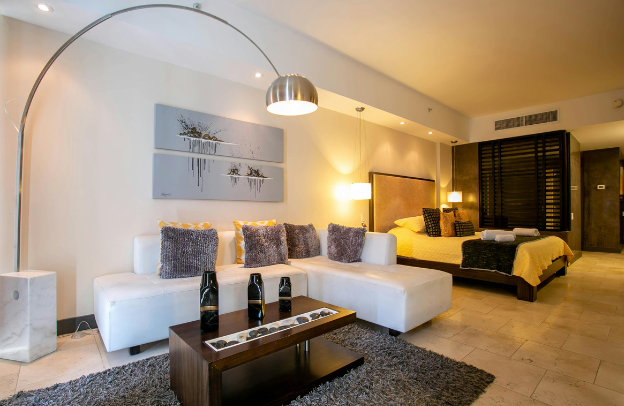Places to Visit in Bologna, Italy

Looking for places to visit in Bologna, Italy? here is your answer. Welcome to Bologna the capital of the eponymous metropolitan city in Emilia-Romagna. Many consider the city to be one of the most charming in Italy. Those who appreciate delicious cuisine will undoubtedly enjoy it; it is known as Italy’s gourmet capital and there is a reason for that. Get our free Travel Checklist
One of Bologna’s key businesses is the production of pasta and sausages, so sample some while you are here.
Along with visiting the city’s tourist attractions, spend time absorbing its distinct peculiarity: stroll beneath its famed Portici, peek inside its elegant old shops, notice architectural quirks and interesting brickwork, and pause in one of the numerous cafés to feel the very essence of being in Bologna.
The majority of its prominent tourist attractions are within walking distance of Piazza Maggiore, and the arcaded streets make strolling in Bologna enjoyable in all weather conditions. With our list of the top places to visit in Bologna, you can find the greatest sights and enjoy this Italian jewel of a city.
Visit Piazza Maggiore and Pizza del Nettuno
It may appear to you that everyone in Bologna is meeting friends at the same moment in these two adjacent squares in the city center. The murmur of conversation and laughing blends with the splashing of water in the majestic Neptune Fountain, which gives the Piazza del Nettuno its name.
It was designed by Giambologna in the 16th century and is considered one of the best fountains of its time.
Almost every significant attraction in the city, as well as the most important streets, is within a few minutes’ walk, including the popular retail route, Via dell’Indipendenza, and Via Galleria, with its numerous historic aristocratic homes.
The elegant arcaded Via dell’Archiginnasio runs alongside the massive Basilica of San Petronius, which occupies one side of Piazza Maggiore.
The old Palazzo del Podestà (Governors Palace) on the north side has a tower, Torre dell’Arengo, which dates from 1259.
People whispering on one side of the vaulted dome can be heard by those on the opposite corner. It’s fun to be in this angle of the city.
Visit San Petronio (La Basilica di San Petronio)

When building on the gigantic basilica that dominates one side of Piazza Maggiore started in 1390, it was intended to be even larger than St. Peter’s Basilica in Rome, but it never quite made it.
In truth, it was never completed, and the facade is still unfinished. The drawings for the facade, including those by the famous architect Andrea Palladio, may be seen at the little museum at the back of the church.
The completed interior is widely described as the pinnacle of Gothic architecture in Italy, and each of the side chapels appears to be a miniature church.
Look notice the unusual line running across the nave floor; this is a meridian line.
Tour Bologna Santo Stefano (St. Stephen Basilica)
While there are several intriguing and art-filled churches in Bologna, Santo Stefano is the oldest and one of the most atmospheric of them all.
The Benedictines erected the complex of eight structures, known as the cradle of religion in Bologna, between the 10th and 13th centuries. It was designed to hold the bones of Bologna’s early martyrs, Saints Vitale and Agricola.
The main church, Chiesa del Crocifisso, features a 12th-century exterior pulpit and a vault dating from 1019. The octagonal Santo Sepolcro opens into a pillared courtyard bordering a two-story cloister.
Look for the capitals of various types recycled from former Roman and Byzantine buildings, as well as the 6th-century mosaic flooring, in the plain third church.
Make sure you see the Bologna’s Leaning Towers
Although Pisa’s are more famous, Bologna features a pair of towers that appear to tilt even more dramatically due to their small design. They are the most well-known of the 20 towers that survive from the more than 100 that made up Bologna’s 12th-century skyline.
Leaning Towers were important both as watchtowers and places of shelter in the event of an assault. Soon, their height became status symbols for the noble families that erected them.
The 48-meter Torre Garisenda leans by more than 13 meters; ascend the 498 steps within Torre degli Asinelli for bird’s-eye views of Bologna. You must see these masterpieces of architecture.
See the Sanctuary and Portico of the Madonna di San Luca
The basilica is built on a hill with views of the city and the Po Valley scenery, and its classical interior is accented by a magnificent floor of inlaid black, white, and red marble. The sanctuary is also lined in a beautiful variegated black and white marble to blend with the entire design of the building.
The 3.8-kilometer covered arcade that connects the sanctuary to the city, however, separates this basilica from all others in Italy.
The world’s longest portico, with 666 arches, was erected between 1674 and 1793 to shield the Byzantine Madonna with Child image during its yearly procession into Bologna.
Since 1433, when it was taken from a hilltop convent in the expectation of a miracle to stop harvest-threatening rains, the icon, thought to have been painted by Saint Luke, has traversed this trip to Bologna’s Cathedral of San Pietro.
This gorgeous stroll, beginning at Piazza di Porta Saragozza, is a popular – and free – Sunday activity in Bologna, or you may take the San Luca Express, a tourist “train” from Piazza Maggiore.
The San Luca Sky Experience is a panoramic terrace accessible by climbing into the basilica’s dome for even more expansive views.
Visit the Bologna’s Archiginnasio Anatomical Theatre

The Archiginnasio, formerly the main building of the University of Bologna, is now home to one of the most unique venues in Bologna: the classroom where medical students learned anatomy by viewing bodies being dissected.
It is the magnificent interior and its distinctive wood carving that draws visitors today, rather than the strange exterior.
The centerpiece is Ercole Lelli’s Spellati (Skinless), a life-sized wood sculpture of a man with minutely detailed muscle and skeletal system.
The Stabat Mater lecture hall is also housed in this structure, and its walls are adorned with coats of arms. The Institution of Bologna, founded in the 11th century, is the oldest university in the Western world.
Pinacota Nazionale (National Gallery)
The Pinacoteca has a one-of-a-kind mission: to conserve and exhibit works by artists who lived and worked in Bologna and the Emilia-Romagna area, primarily from the 13th to the early 19th century.
Some of the paintings have their own backstories; many were salvaged from churches that were closed or converted to other uses, while others were returned to Bologna after Napoleon.
Raphael, Perugino, Tintoretto, and other Renaissance artists are represented in the museum’s holdings.
Visit some of the over 40 kilometers Portici in Bologna

Visitors to Bologna can’t help but stroll beneath the Portici, or arcades that line many of the city’s streets. They provide welcome refuge from the summer sun and rain, as well as an extra room for merchants, which frequently exhibit products beneath them.
These Portici are one-of-a-kind, built at various eras and in various designs, and are frequently adorned with stone carving or other decorations.
Bologna has over 40 kilometers of these Portici, the longest of which is 3.8 kilometers that connect the city to the hilltop Sanctuary of the Madonna di San Luca.
The Portici of Bologna is a nominee for UNESCO World Heritage Site status in 2021.
Concluding note on the places to visit in Bologna, Italy
Are you visiting bologna for the first time? There are scours of historic and cultural sites to visit and refresh your memory of history with the great European city.
Get ready to enjoy your visit to Bologna, the lively and historic capital of the Emilia-Romagna region. Keep traveling and continue to enjoy yourself.
If you find any value in this post, share also with your friends who might need it. Get our Free Travel Checklist for your next trip.






